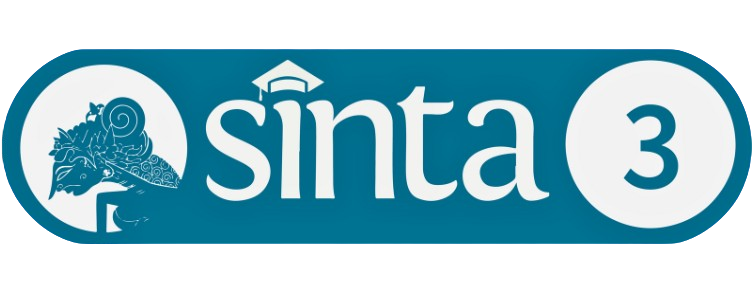Hubungan antara Self-control dan Dukungan Sosial terhadap Agresivitas Remaja di Kota Surabaya
Unduhan
Fields, A. (2018). DISCOVERING STATISTICS USING IBM SPSS STATISTICS (5th ed). SAGE Publications Inc.
Buss, A. H., & Perry, M. (1992). PERSONALITY PROCESSES AND INDIVIDUAL The Aggression Questionnaire. 63(3), 452–459.
Christie, S. (2007). Current Approaches to the Assessment and Management of Anger and Aggression in Youth : A Review.
Cohen, S; Hobermen, H. (1983). Positive events and social supports as buffers of life change stress. Journal of Appleid Psychology.
Cohen , L.G Underwood; Gottlieb, H. b. (2000). Social Support Measurement and Intervention. Oxford University Press. https://doi.org/https://doi.org/10.1093/med:psych/9780195126709.001.0001
Denson, T. F., DeWall, C. N., & Finkel, E. J. (2012). Self-control and aggression. Current Directions in Psychological Science, 21(1), 20–25. https://doi.org/10.1177/0963721411429451
DeWall, C. N., Finkel, E. J., & Denson, T. F. (2011). Self-control inhibits aggression. Social and Personality Psychology Compass, 5(7), 458–472. https://doi.org/10.1111/j.1751-9004.2011.00363.x
Grandis, C. (2019). Hubungan Antara Dukungan Sosial Teman Sebaya Dengan Agresivitas Pada Remaja. http://repository.untag-sby.ac.id/id/eprint/2351
Hamama, L., & Ronen-shenhav, A. (2012). Children and Youth Services Review Self-control, social support , and aggression among adolescents in divorced and two-parent families. Children and Youth Services Review, 34(5), 1042–1049. https://doi.org/10.1016/j.childyouth.2012.02.009
Hoberman, M. (1983). Life Change Stress ' m a l. 99–125.
Hurlock, E. B. (2001). Developmental psychology : a life-span aproach. Tata McGraw-Hill Publishing.
Santrock, J. (1995). Life Span Development (Edisi Keli). Erlangga.
Luthfi. (2009). Psikologi Sosial. Lembaga Penelitian UIN.
Marsela, R. D., & Supriatna, M. (2019). Kontrol Diri : Definisi dan Faktor. 3, 65–69.
Monks, F., Knoers, A., & Hadito, S. R. (1999). Psikologi Perkembangan: Pengantar dalam berbagai bagiannya. Gadjah Mada University Press.
í•, F. G. (2010). The effect of perceived social support on subjective well-being. 2, 3844–3849. https://doi.org/10.1016/j.sbspro.2010.03.602
Orpinas, P., & Frankowski, R. (2001). of Early Adolescence A Self-Report Measure of. https://doi.org/10.1177/0272431601021001003
Pallant, J. (2010). SPSS Survival Manual: a Step Guide to Data Analysis Using Spss for Windows. Open University Press.
Praptiani, S. (2013). Pengaruh Kontrol Diri Terhadap Agresivitas Remaja dalam Menghadapi Konflik Sebaya dan Pemaknaan Gender. Jurnal Sains Dan Praktik Psikologi, I(1), 1–13. https://vdocuments.site/1340-3035-1-pbpdf.html
Prayogo, W. (2018). Hubungan Dukungan Sosial Orangtua Dan Religiusitas Dengan Perilaku Agresif. 6(4), 474–481.
Ratnasari, P. (2017). Hubungan Kontrol Diri dan Dukungan Sosial Keluarga dengan Agresivitas Siswa di SMK YP17 Pa. http://etheses.iainkediri.ac.id/id/eprint/280
Nurhalim, S. (2019). Teganya Anak Tendang Kepala Ibu Hanya Karena Uang Rp 10 Ribu. Detik.Com. https://news.detik.com/berita-jawa-timur/d-4675995/teganya-anak-tendang-kepala-ibuhanya-karena-uang-rp-10-ribu
Sumijah. (2016). PENGARUH DUKUNGAN SOSIAL DAN REGULASI DIRI TERHADAP AGRESIVITAS REMAJA DARI KELUARGA BROKEN HOME.
Suryanto, Ilham, N. A, Ike, H., Bagus. (2012). Pengantar Psikologi Sosial. Airlangga University Press.
Wills, T. A. (1985). Stress , Social Support , and the Buffering Hypothesis. 98(2).
Wulandari, M. S. (2016). Hubungan antara dukungan sosial dengan subjective well-being pada remaja penyandang disabilitas tunadaksa. Skripsi. Surabaya: Universitas Airlangga.
Zahrani & Tri Kurniati Ambarini. (2019). Pelatihan Kontrol Diri untuk Menurunkan Perilaku Agresif Siswa Decreasing Student's Aggressive Behavior Through Self-control Training. 11(2), 104–113.
BRPKM adalah terbitan berkala dengan akses terbuka Creative Commons Attribution 4.0 International (CC-BY 4.0) sehingga hak cipta tetap berada di tangan penulis.
Dengan lisensi ini, siapapun berhak menggunakan informasi dan melakukan re-distribusi konten yang dimuat dalam jurnal ini untuk kepentingan apapun, termasuk kepentingan komersial. Hal tersebut dapat dilakukan selama memenuhi dua kondisi, yaitu; (1) anda harus memberikan atribusi dengan mengutip sumber tautan aslinya, dan menyatakan apabila ada perubahan yang dilakukan; dan (2) anda tidak dapat menggunakan ketentuan hukum atau sarana kontrol teknologi yang secara hukum dapat membatasi orang lain untuk melakukan hal-hal yang diizinkan oleh lisensi ini.
Redaksi jurnal tidak akan meminta penulis untuk melakukan persetujuan transfer hak cipta atas semua naskah yang diterbitkan.










